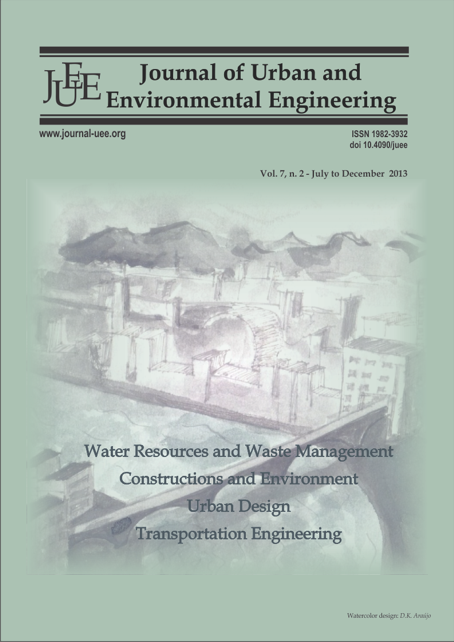COLLOID RELEASE FROM DIFFERENT SOIL DEPTH
DOI:
https://doi.org/10.4090/juee.2013.v7n2.223-230Keywords:
Colloidal particle release, capillary force, water content, air-water interfaceAbstract
Naturally occurring clay colloidal particles are heavily involved in sediment processes in the subsurface soil. Due to the importance of these processes in the subsurface environment, the transport of clay colloidal particles has been studied in several disciplines, including soil sciences, petrology, hydrology, etc. Specifically, in environmental engineering, clay colloid release and transport in the sediments have been extensively investigated, which are motivated by environmental concerns such as colloid-facilitated contaminant transport in groundwater and the subsurface soil. Clay colloid release is resulted from physical alteration of subsurface sediments. Despite the potential importance of clay colloid activities, the detailed mechanisms of release and transport of clay colloidal particles within natural sediments are poorly understood. Pore medium structure, properties and flow dynamics, etc. are factors that affect clay colloid generation, mobilization, and subsequent transport. Possible mechanisms of clay colloid generation in the sediments include precipitation, erosion and mobilization by changes in pore water chemistry and clay colloid release depends on a balance of applied hydrodynamic and resisting adhesive torques and forces. The coupled role of pore water chemistry and fluid hydrodynamics thus play key roles in controlling clay colloid release and transport in the sediments. This paper investigated clay colloidal particle release and transport, especially the colloidal particle release mechanisms as well as the process modeling in the sediments. In this research, colloidal particle release from intact sediment columns with variable length was examined and colloidal particle release curves were simulated using an implicit, finite-difference scheme. Colloidal particle release rate coefficient was found to be an exponential function of the sediment depth. The simulated results demonstrated that transport parameters were not consistent along the depth of the sediment profile.Downloads
Download data is not yet available.
Downloads
Published
2013-12-15
Issue
Section
Articles




